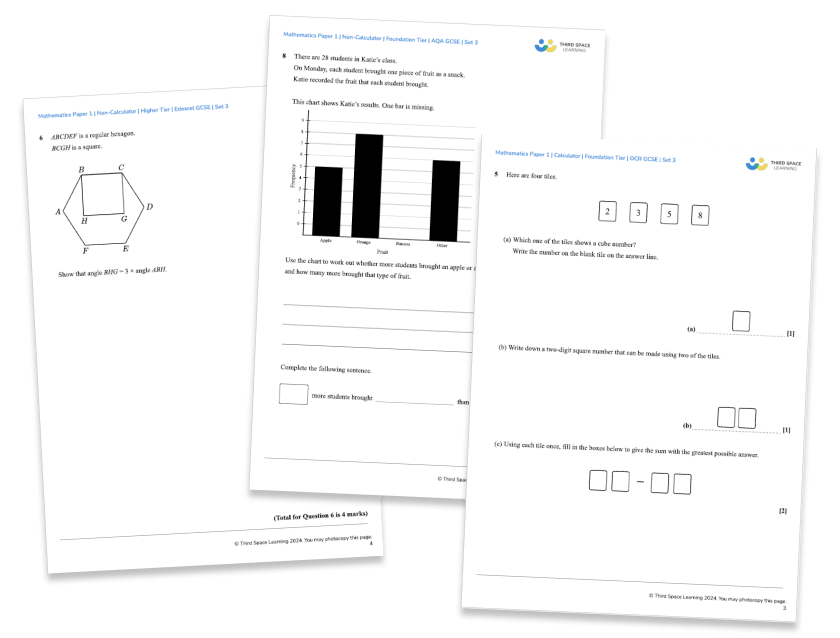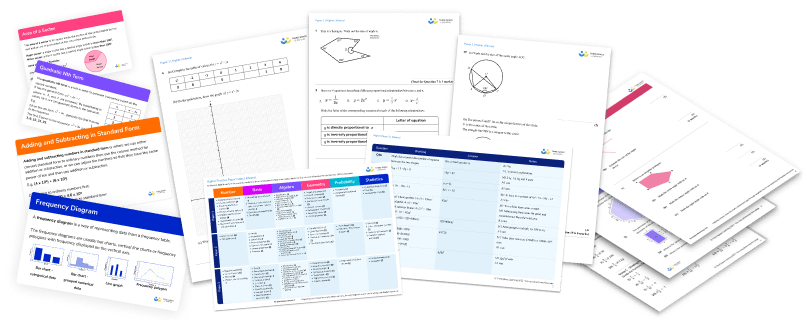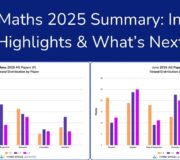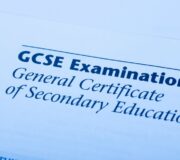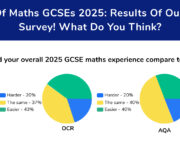Summary Of ALL GCSE Maths Papers 2023: Question Analysis, Highlights & Next Steps
Originally published Monday 26th June 2023.
The June 2023 series of GCSE Maths exam papers is now over, and students up and down the country are winding down for their summer holidays. However, here at Third Space Learning, we’re not done yet! In this blog, we’ll analyse the exam papers in depth and consider the implications for preparing the next cohort of candidates both for November resits and for next summer’s exams.
GCSE MATHS 2026: STAY UP TO DATE
Join our email list to stay up to date with the latest news, revision lists and resources for GCSE maths 2026. We’re analysing each paper during the course of the 2026 GCSEs in order to identify the key topic areas to focus on for your revision.
GCSE dates 2026
GCSE results (2026 when available)
Get ahead on revision with the GCSE maths papers analysis from 2025:
Analysis of GCSE Maths Paper 1 2025
Analysis of GCSE Maths Paper 2 2025
GCSE Maths Paper Analysis and Summary 2025
GCSE Maths Teacher Survey Results 2025
- Highlights from the GCSE Maths papers 2023
- Exam adaptations for GCSE Maths November 2023 and beyond
- This year’s papers were fair and, arguably, easy
- June 2023 papers included some unusual topics
- June 2023 GCSE Maths Foundation
- June 2023 GCSE Maths Higher
- What have we learned from the papers this year?
- What are the implications for teaching next year?
Highlights from the GCSE Maths papers 2023
Need a quick review? Here’s what you need to know about the June 2023 series of maths papers:
- Both tiers of papers were generally well-received, with Paper 3 in particular described as “easier”;
- Both tiers had a higher proportion of procedural questions and a lower proportion of multi-step unfamiliar problems when compared to the “average” paper;
- As usual, there were some topics which appeared twice or more across the series, and some topics that weren’t assessed in depth – these include Pythagoras theorem and trigonometry in Foundation, and linear graphs in Higher.
GCSE Revision Lists Foundation & Higher
Download these revision lists to support your students and their revision. Includes dedicated Foundation and Higher lists, with links to our collection of free downloadable resources including worksheets, exam questions, diagnostic questions, revision mats and much more!
Download Free Now!Exam adaptations for GCSE Maths November 2023 and beyond
In 2023, formula sheets have been provided for candidates to use in the examinations. That was the only exam adaptation that remains for 2023. It has been confirmed that this will continue for the November 2023 sitting to ensure parity for students resitting in November.
As exams are now returning to pre-pandemic conditions, it is assumed that formula sheets will not be available to candidates in 2024.
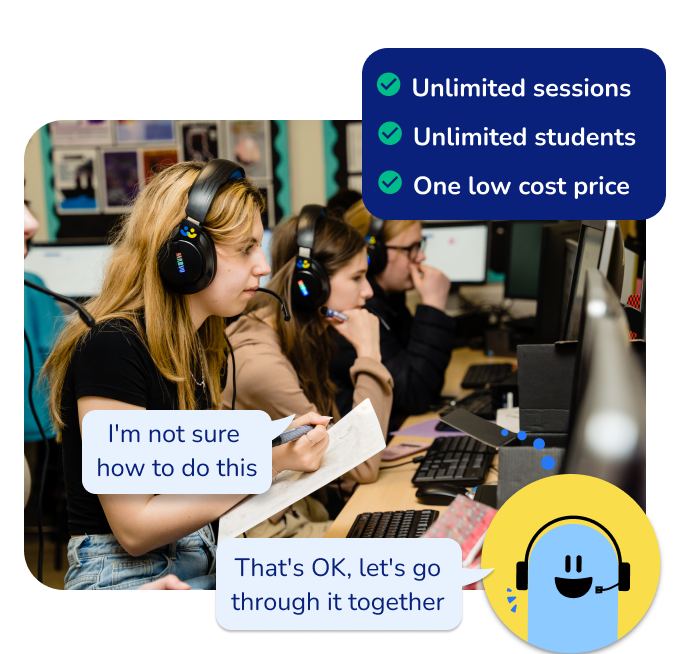
Unlimited GCSE maths tutoring with Skye, the voice-based AI maths tutor.
Built on the same principles, pedagogy and curriculum as our traditional tutoring but with more flexibility, reach and lower cost.
Help your GCSE students achieve their target grade with Skye’s one to one maths tutoring.
Watch Skye in action2023’s papers were fair and, arguably, easy
Student reactions on social media to the 2023 papers were generally positive. The papers were fair and balanced, perhaps to the point of being an “easier” set of papers.
Paper 3 in particular felt more like a pre-2015 specification paper, particularly on Foundation, where there was very little beyond one- or two-mark procedural questions until halfway through the paper.
Over the exam season, I analysed and discussed each paper in depth, looking at what had appeared on each paper and what might appear on subsequent papers. In this article, I consider the exam series as a whole, looking in more detail at which topics were assessed procedurally, and which included further complexity, such as solving problems in unfamiliar circumstances or real-life contexts. I also look at gaps across the series to see what may now be more likely to appear on the November resit series or in June 2024.
How we measure complexity
As usual, we’ve applied the following complexity measure to the data:
- C1 – standard procedural problems, often worth one or two marks;
- C2 – problems asking candidates to explain their reasoning, interpret information from tables, diagrams or other contexts, or ‘show that’ type questions;
- C3 – non-standard multi-step problems, often requiring the application of skills from a variety of topics, worth three, four, or more marks.
As regular readers may already know, this isn’t a ‘difficulty’ measure. For example, simultaneous equations is one of the most difficult topics assessed on the Foundation tier, but the majority of problems are procedural, so would be categorised as C1.
What this measure does is help to direct focus for exam revision. We can see where it’s worth investing time on unfamiliar problems or contexts by targeting those topics most likely to assess in that way (e.g. proportional reasoning, shape, particularly perimeter, area and volume, context-based calculations, percentages and so on).
June 2023 papers included some unusual topics
Before we get into the analysis, let’s have a quick look at the 2023 curveballs.
Every year we get questions where topics are combined in an unusual format or contexts we’ve not encountered before. At the start of the new specification, quite a lot of the questions felt different, but as we’re more used to this specification now, this seems to have eased off somewhat.
However, there are a few worth noting from 2023. It may be worth including versions of these in schemes of work to cover when these topics are taught.
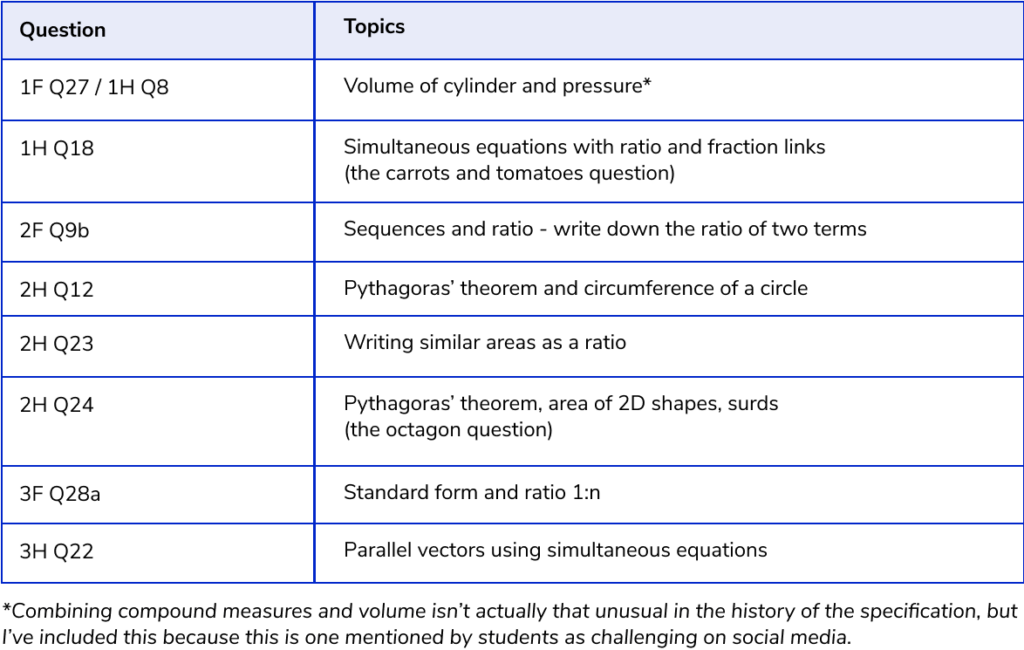
June 2023 GCSE Maths Foundation
Number was the highest strand across the Foundation papers
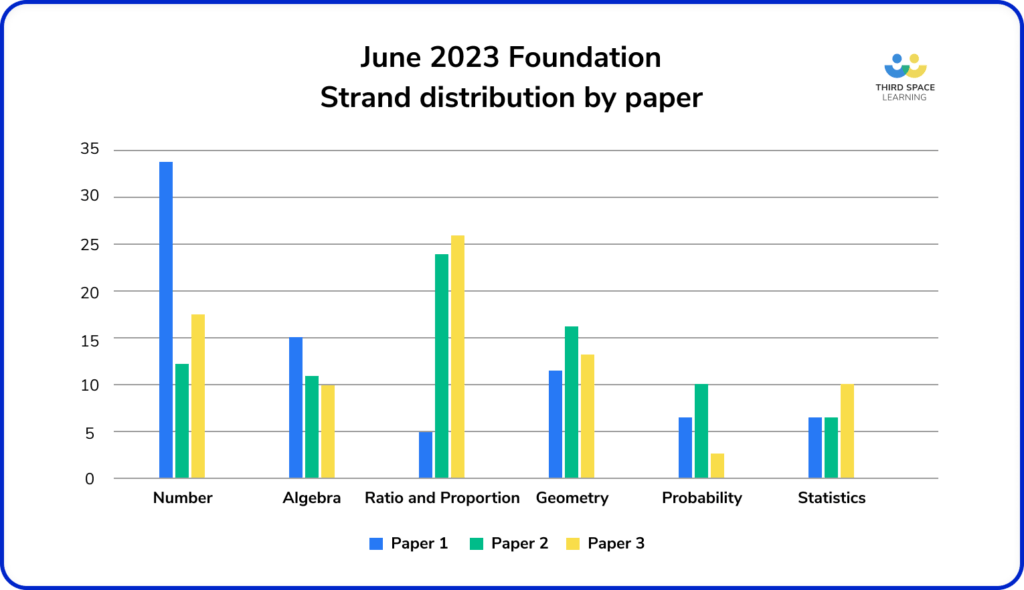
As we have seen with previous series of Edexcel Foundation papers, there were more marks available in Number than in other strands, particularly on the non-calculator Paper 1.
Algebra and Geometry proportions varied across the three papers. As is typical for Foundation tier, there was more Geometry than Algebra work on this series.
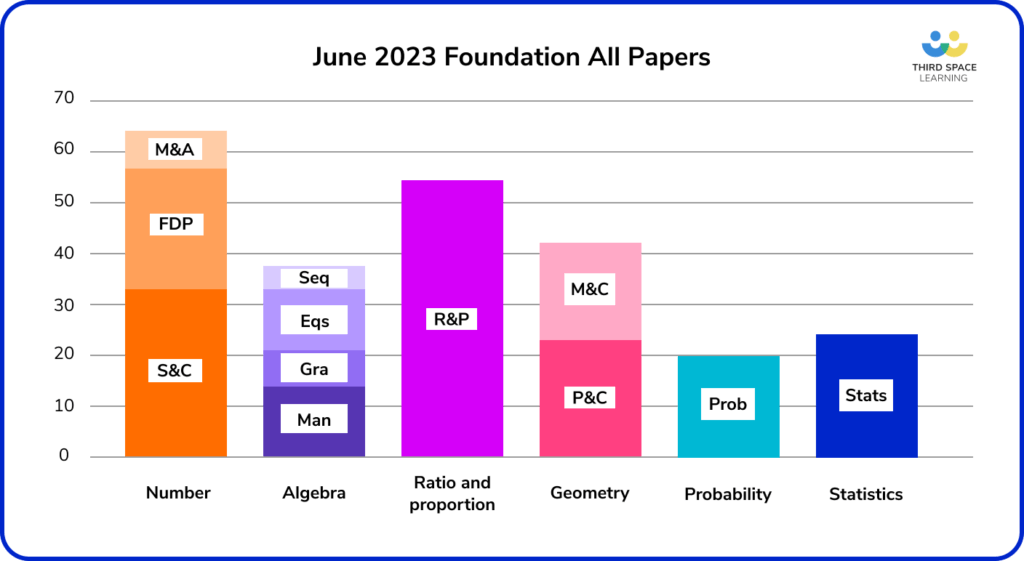
Number
Looking at each strand in further detail, over half (52%) of the marks within Number were for Structure and Calculation – including integer calculations, HCF, LCM, product of primes, place value calculations, standard form and ordering.
Algebra
36% of the marks within Algebra were in Algebraic Manipulation, including expanding brackets, simplifying and writing expressions and using formulae. There was very little work on graphs in this series, with linear graphs in particular not assessed in detail.
Ratio and proportion
As is usual, most of the marks within Ratio and Proportion were for proportional reasoning calculations and work on units of measurement (unit conversions and compound measures). Of note on this series was the double appearance of density, an embedded pressure calculation, but relatively limited work on speed calculations compared to some previous series.
Geometry
Within Geometry, the two strands were fairly balanced across the two papers. On some previous series, this has skewed more in favour of topics in Mensuration and Calculation, such as perimeter, area and volume and Pythagoras and trigonometry. However, in this series there was almost no assessment of Pythagoras and trigonometry. In fact, there was only one mark across the entire series for an exact trigonometric value on Paper 1.
Probability and Statistics
Looking at the series as a whole, Probability and Statistics were evenly balanced, with proportionally more Probability on Paper 2 and more Statistics on Paper 3. Coverage within Probability was fairly comprehensive but there was no work on sampling in Statistics.
June 2023 GCSE Maths Foundation was an “easier” series of papers
Although my complexity measure isn’t necessarily correlated with the perceived difficulty of the exam, it’s perhaps unsurprising that 2023’s “easier” papers (according to students) have a higher proportion of standard procedural (C1) questions than some previous series.
Compared to the average of all previous series, we can see that the proportion of C2 marks (interpret/explain/show that) is broadly similar. The difference in perceived difficulty is perhaps due to the slightly lower proportion of C3 marks (multi-step, unfamiliar problems) – candidates understandably find four- or five-mark questions really challenging.
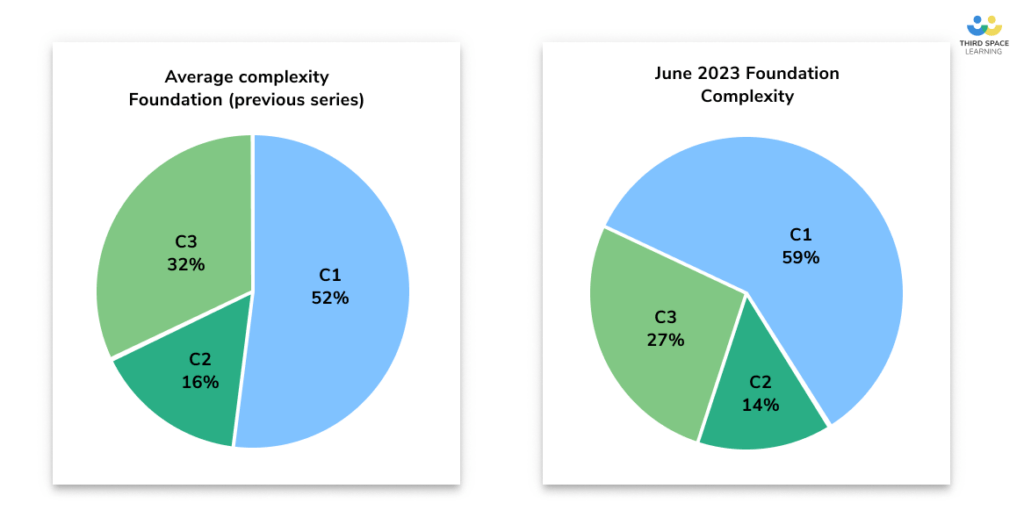
Interestingly, when looking at the complexity over the previous June series, we can see that 2023’s proportion of C1 questions on Foundation looks significantly higher than usual. However, when looking at the trends over the “pandemic papers” (i.e. the two papers that were used in the November 20/21 sittings, and the 2022 series with adaptations), the spike does not feel so apparent.
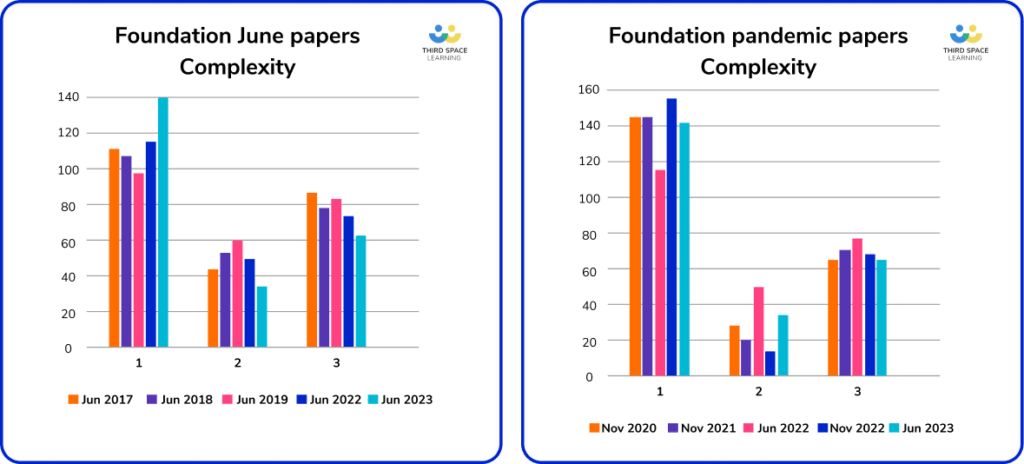
What was missing from the 2023 Foundation Papers?
This is not an exhaustive list, but some of the topics that weren’t examined on any of the three Foundation papers include:
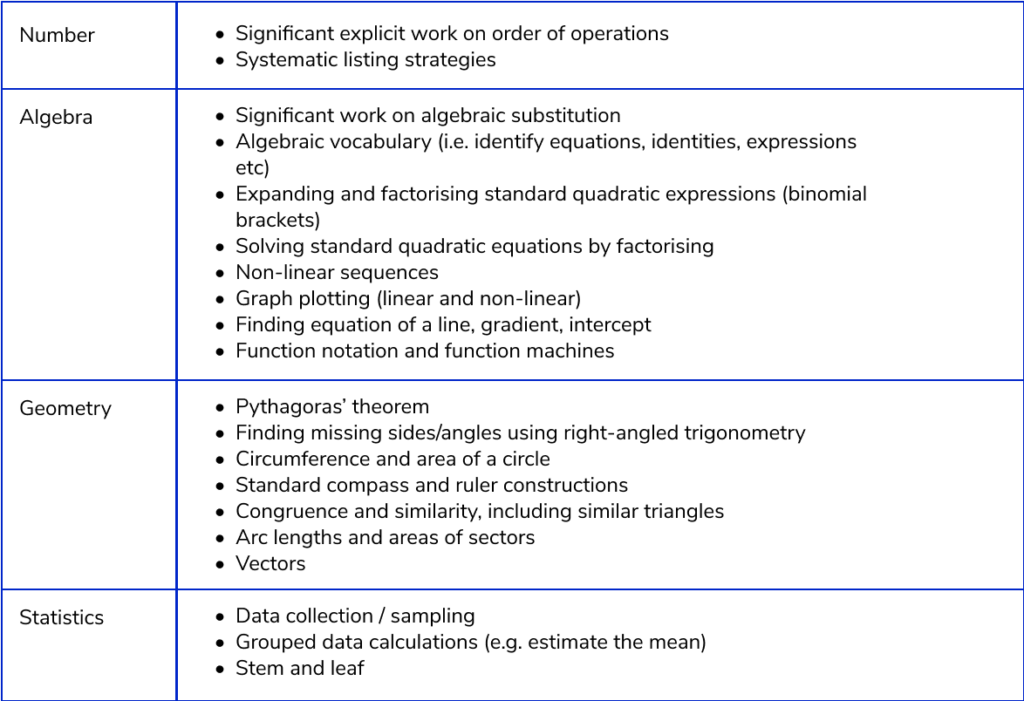
Many of these topics are underlined content on the GCSE specification, meaning that they are topics directed at the top end of the Foundation paper (and often appear in crossover content). As such, there is not enough room for assessment of each of these on every exam.
However, the fact that they haven’t appeared on this series increases the chance of them appearing next time – although this is not a guarantee and, as always, we should be wary of over-interpretation!
The complexity generally continued the trend of previous years
The pattern with GCSE Foundation papers is generally:
- A heavy weighting towards Number and Proportion content, with a large proportion of problem-solving and context-based questions;
- A slightly higher proportion of Geometry work compared to Algebra work;
- Most Algebra, Statistics and Probability content assessed procedurally.
This series of papers does not deviate from this pattern considerably, although there are quite a few more C1 questions and fewer C3 questions than on some previous series.
Complexity: Number
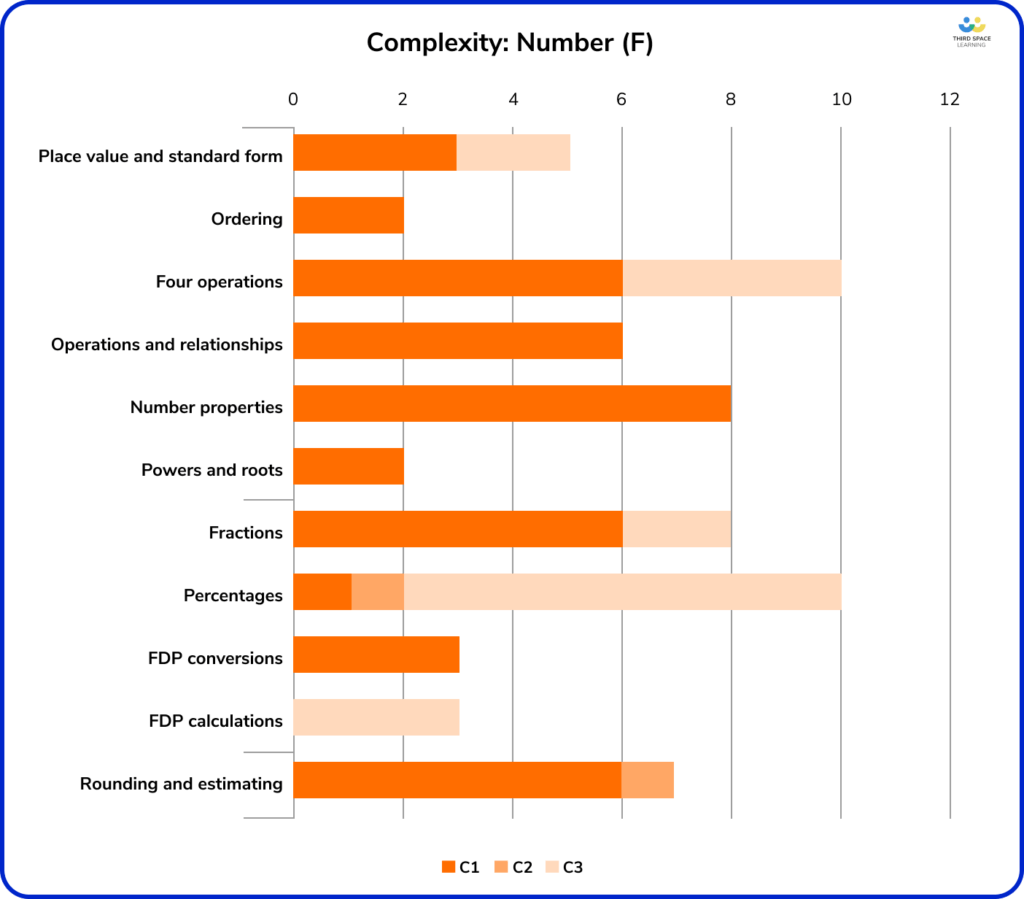
As with previous series, four operations, percentages, FDP calculations and fractions attracted the majority of the C3 marks – these are the multi-step problems featuring real-life contexts, and often include an element of money or time calculation as well.
There were plenty of C1 marks available in the following topics: powers and roots, number properties, ordering, operations and relationships, fraction calculations and rounding and estimation.
Complexity: Algebra
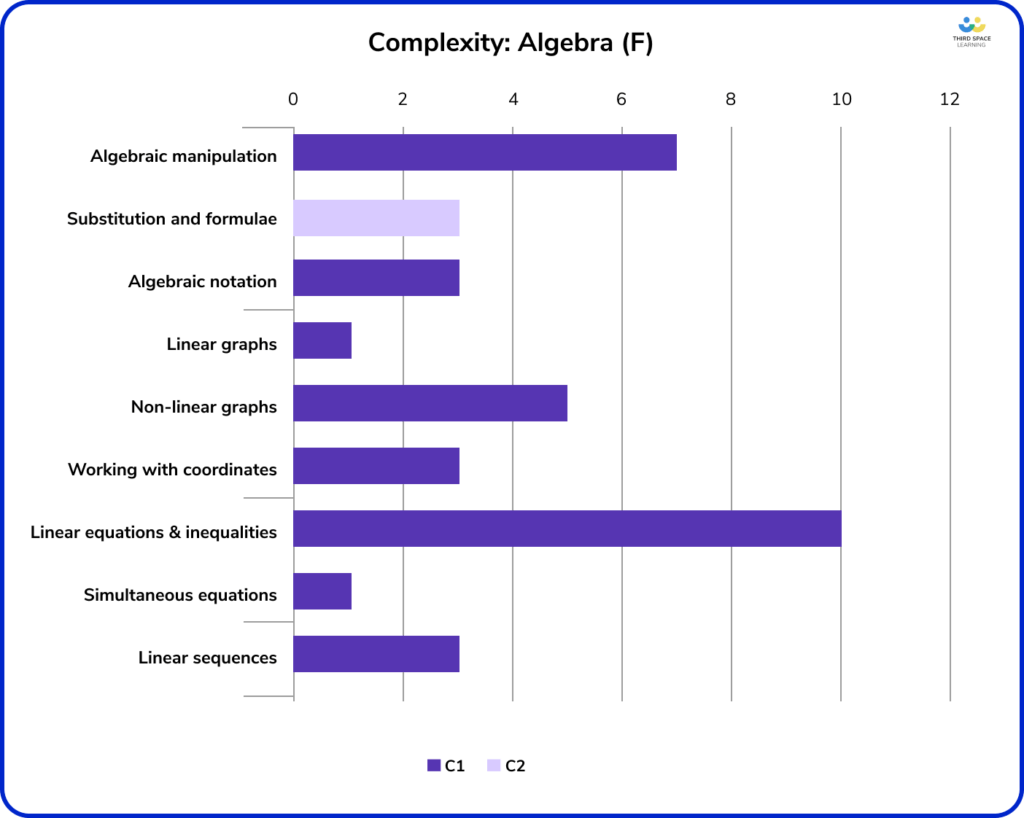
As is typical on Foundation series, Algebra was generally assessed in a procedural manner. It is, however, unusual to see no C3 questions on this graph.
Part of this is due to the topic classifications used in my data analysis. As an example, if we look at 2F Q24, where candidates were expected to form and solve an equation in context using area of triangles and rectangles, I have categorised this as “perimeter and area”, because this is the primary topic needed to access any marks on this question.
However, this was the only question with embedded algebra across the series, so even taking the 4 marks available for this question into account, the proportion of C3 algebra work on Foundation 2023 is low (and perhaps this partly accounts for students’ perceptions of an “easier” paper).
Complexity: Ratio and proportion
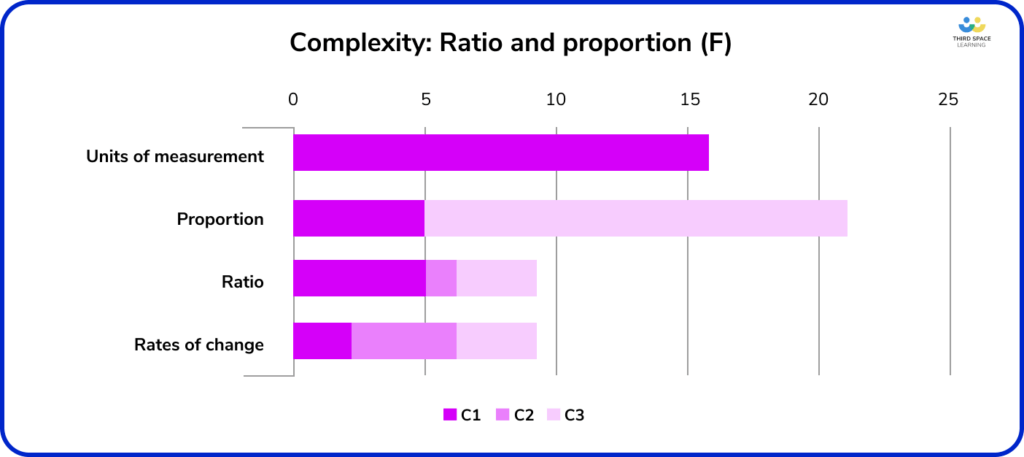
The patterns and distributions within Ratio and Proportion are fairly standard. We usually see lots of multi-step problem solving in the realms of proportion and ratio, as they lend themselves well to real-life contexts and unfamiliar problems.
It is more unusual to see no C2 or C3 questions within units of measurement – this could be due to the relatively low amount of work on speed. Note that students were expected to use pressure in combination with volume of a cylinder on Paper 1; this is accounted for elsewhere.
Complexity: Geometry
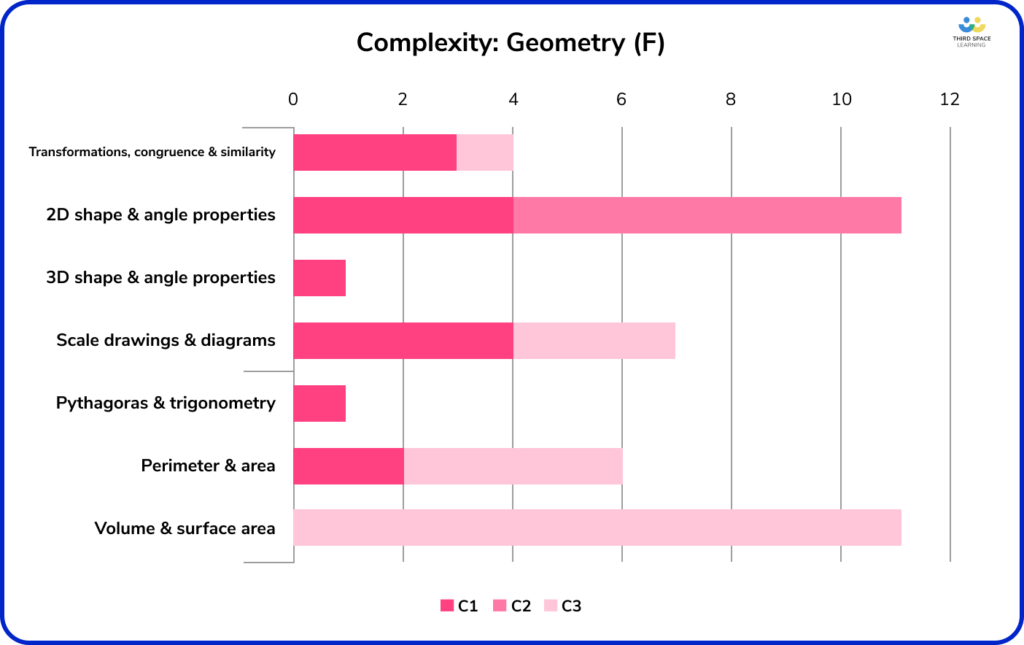
The most surprising find in this topic strand is the significantly low proportion of work on Pythagoras and trigonometry (1 mark across all three papers for exact trigonometric values). We have a high proportion of perimeter, area and volume. Lots of this is C3 content but this is not unusual.
Within Geometry, C2 marks were available in Properties and Constructions for explaining reasoning, mainly on angle fact problems.
There was no work on constructions, loci or vectors on Foundation in 2023.
Complexity: Probability
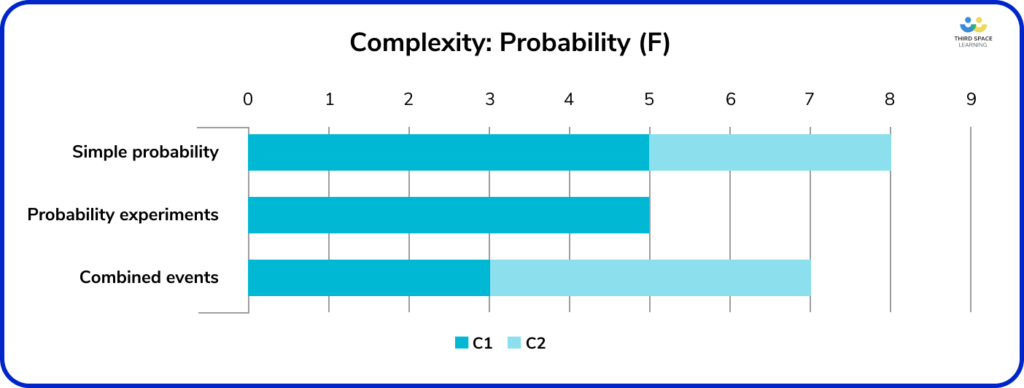
We saw lots of procedural, accessible work within Probability, with fairly broad topic coverage. As usual, there were plenty of C2 marks available in Probability for explaining reasoning, such as 2F Q15 which asked students to compare and show which of two events had a higher chance of occurring.
Complexity: Statistics

As Statistics involves lots of interpreting or reading from charts and tables, it’s not surprising to see quite a bit of C2 Statistics content. The majority of this work was accessible or procedural, with the only C3 question on problem-solving using the mean. We also saw another frequency tree, which remains popular on the Foundation series.
June 2023 GCSE Maths Higher
There was a fair distribution of topics across the Higher papers
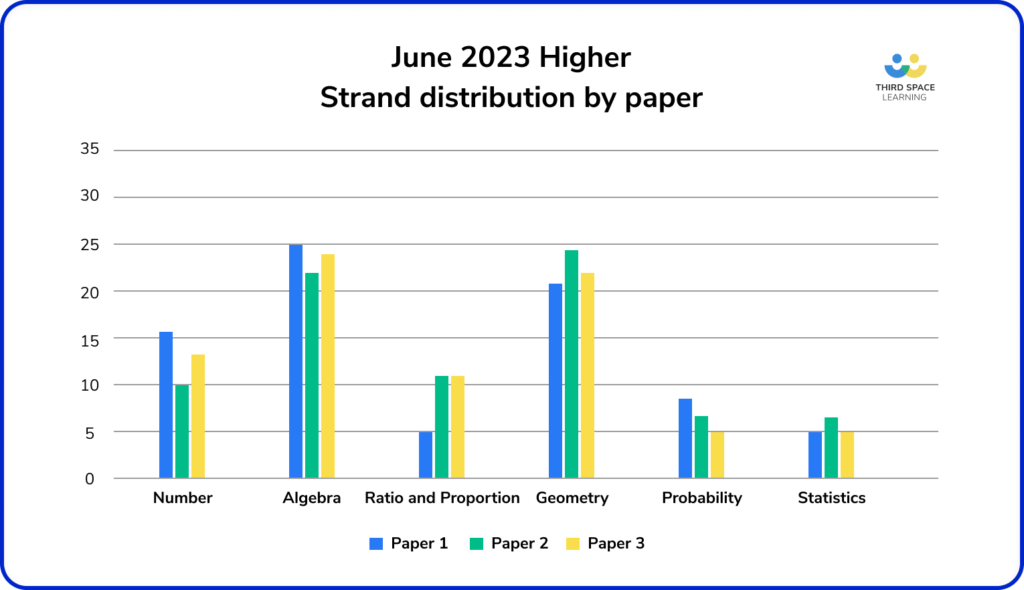
There was more Number and Proportion on Paper 1, with more Algebra and Geometry on Papers 2 and 3, due to the assessment of non-calculator arithmetic on the first paper. However, there was still a fair distribution of topics across the three Higher papers in 2023.
Algebra and Geometry appeared in roughly similar proportions across the three papers, with slightly more Algebra than Geometry overall.
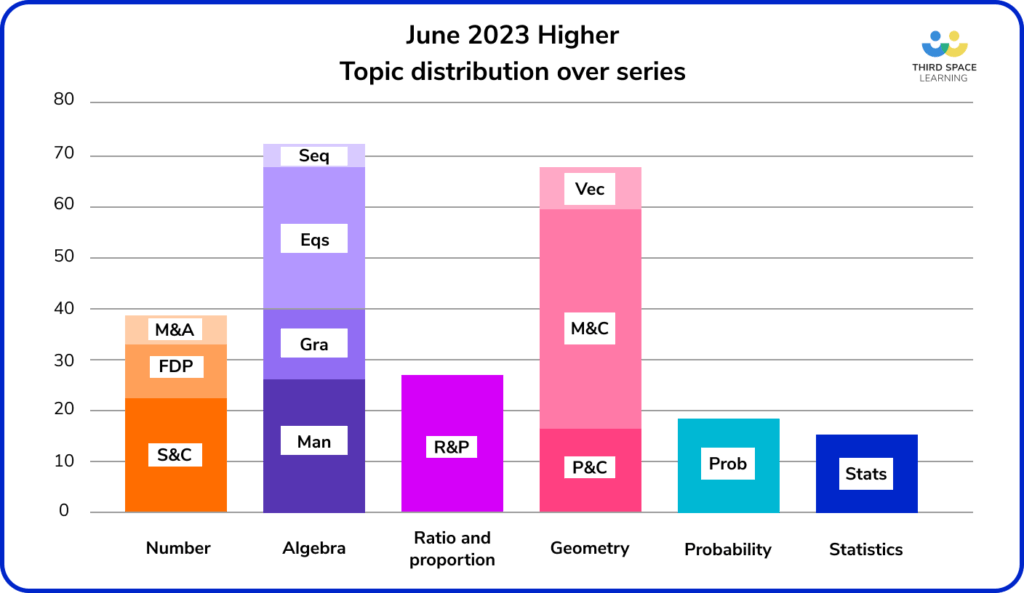
As usual, Algebra and Geometry dominated the Higher series. We can see the majority of Geometry marks were for Mensuration and Calculations – this is typical of many previous series. 7% of the total series marks were for Pythagoras and trigonometry, and 7% for perimeter, area and volume.
Within Algebra, Manipulation and Equations were more prevalent, with less work on Graphs and Sequences than on some previous series. Algebraic fractions, proof, and forming and solving equations in context featured highly.
Statistics and Probability were more balanced in relative proportion than on some previous series. Within these strands, however, there was some imbalance and gaps in topic coverage.
Looking at Statistics further, all of the work was around charts and graphs, with nearly all of the higher level charts or graphs appearing on the paper (frequency polygon, histogram, scatter graph, cumulative frequency, box plot). All work on averages and spread was in context, reading these from various charts or graphs or using them to compare distributions.
Number, Ratio and Proportion were fairly well-balanced and comparable to previous series.
The papers felt very straightforward due to a lower proportion of multi-step problems
As previously discussed, although the perceived difficulty of the exams is not necessarily correlated with the complexity measure, we see that 2023’s more straightforward Higher exam papers have a higher proportion of standard procedural (C1) questions and a lower proportion of multi-step unfamiliar (C3) problems.
As with the Foundation papers, when looking at the complexity over the previous June series, the proportion in 2023 imbalance seems unusual. However, the imbalance does not appear as extreme when considering trends on the “pandemic papers” (November 20/21 and the 2022 series).
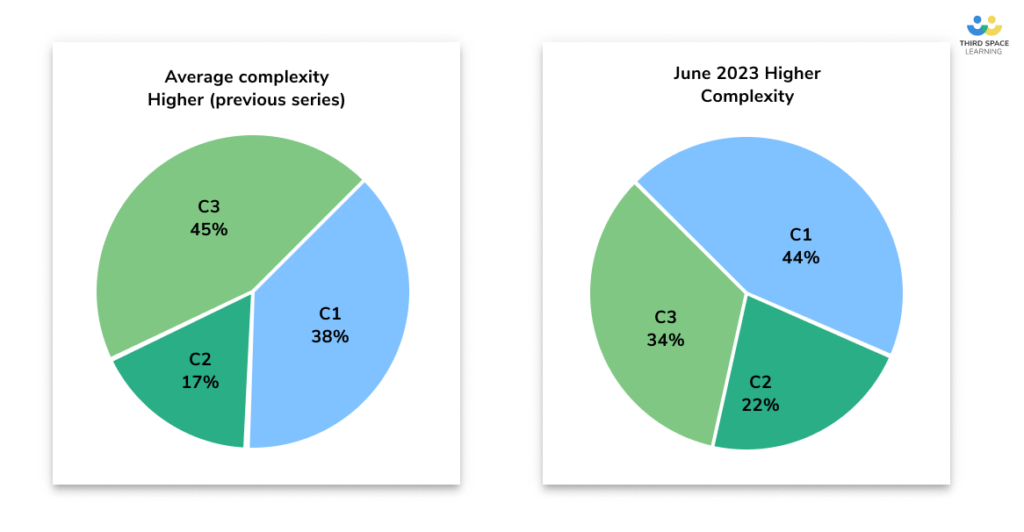
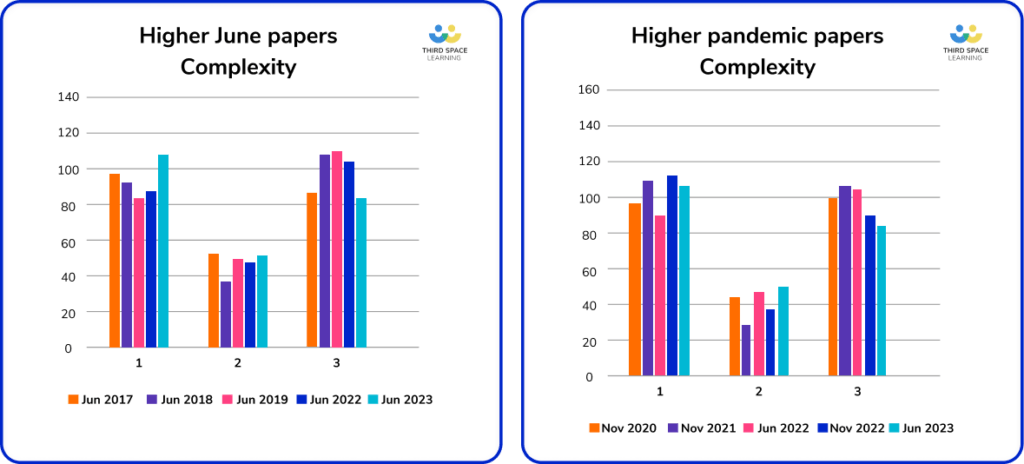
What was missing from the June 2023 Higher papers?
Again, this is not an exhaustive list, but the things that jumped out at me were:
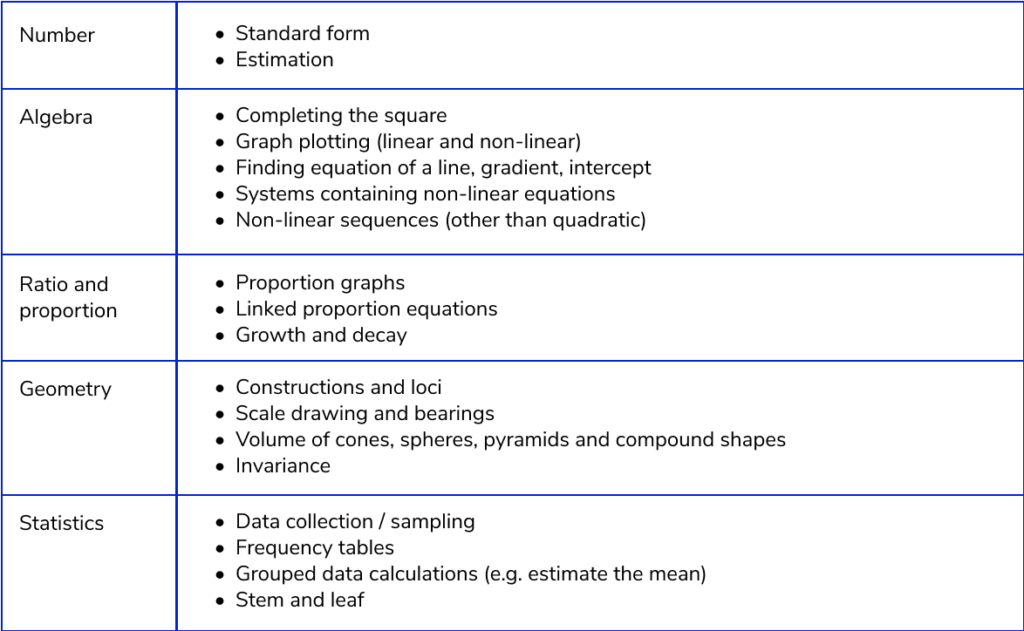
What can we take away from this? While this does not guarantee inclusion of these topics on the next series of papers, we should be aware when preparing students that these may now be more likely to be assessed.
The complexity of the papers in 2023 was not surprising
The pattern with GCSE Higher papers is generally:
- Mostly procedural Number calculation work;
- A higher proportion of multi-step problem solving and reasoning in FDP, Geometry and Ratio and Proportion;
- A mix of procedural, reasoning and more complex problems in Algebra, Statistics and Probability.
While there are a few more C1 questions and fewer C3 questions in 2023 than in some previous series, the 2023 set of papers does not deviate considerably from this pattern.
Complexity: Number
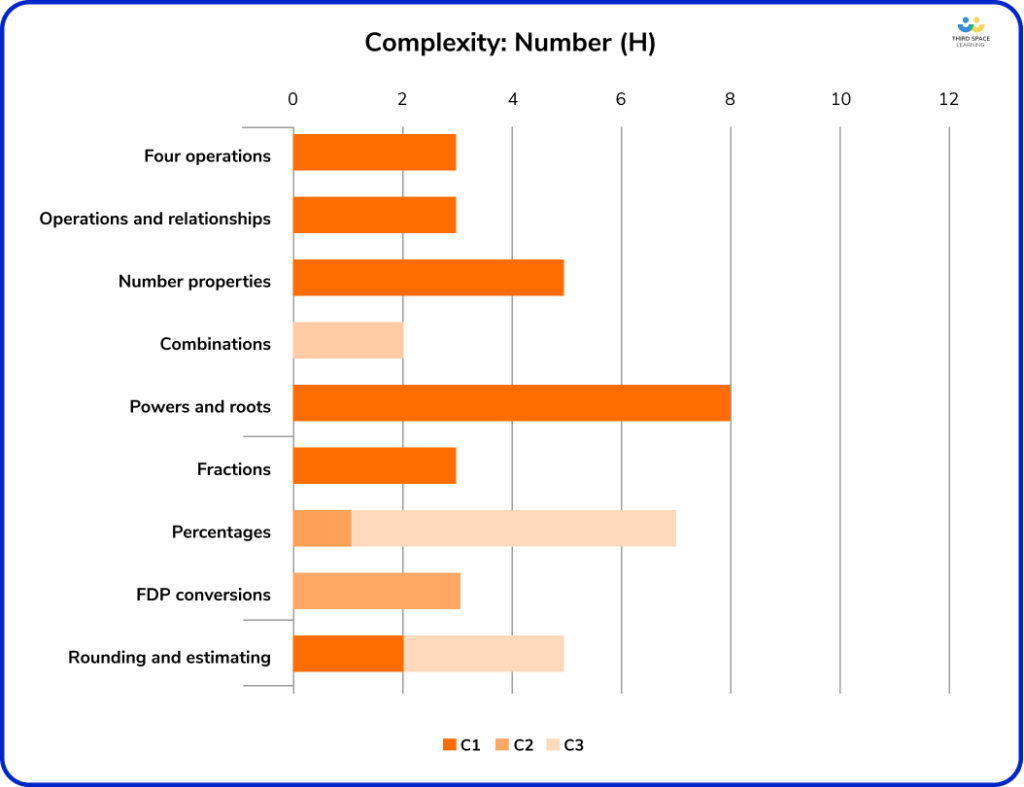
Many of the Structure and Calculations topics on Higher were assessed procedurally (C1). This was with the exception of the product rule for counting question which required candidates to work with the rule in reverse.
All of the work on Percentages was C2 or C3 (finding percentages of amounts in context, and percentage of a percentage).
Complexity: Algebra
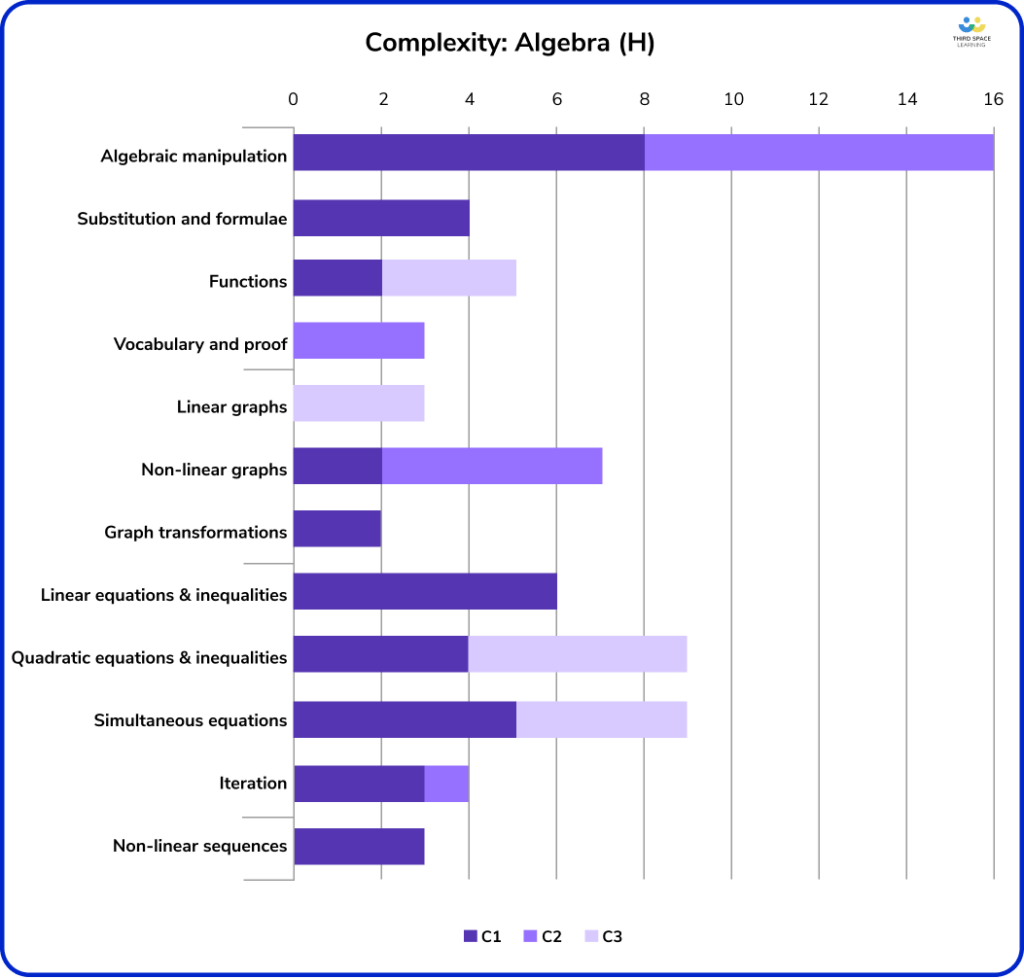
In 2022, we saw more Algebra content assessed in a more procedural manner on the Higher papers. In particular, Paper 2 and 3 lacked questions which involved “tricks” or sneaky bits.
This generally continued in 2023, although there are significantly more C2 questions (proofs, “show that”) on this series of papers.
Where topics were assessed multiple times, we saw a spread of complexity. For example, simultaneous equations appeared on Paper 1 (solve graphically), Paper 2 (solve algebraically) and also embedded in a vector problem on Paper 3.
Complexity: Ratio and proportion
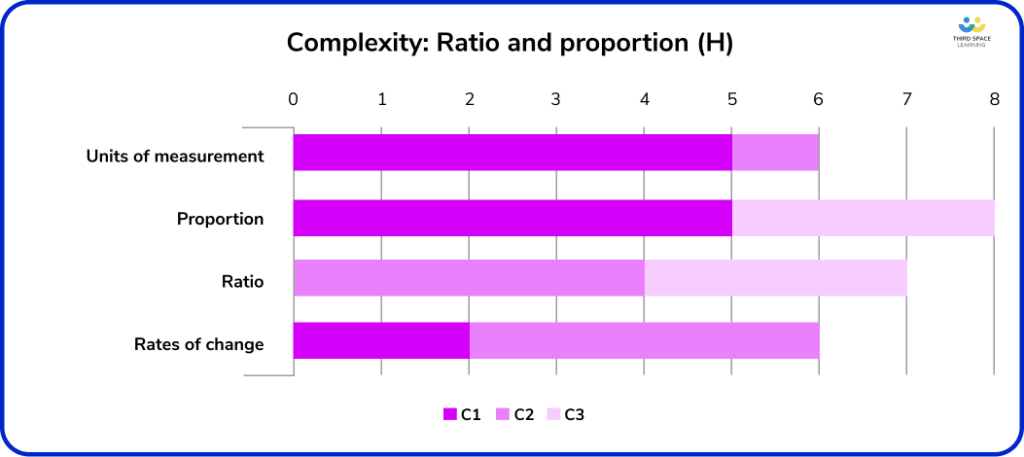
As is typical in the Higher series, all the Ratio content was C2 or C3, such as the ratio combinations on Paper 2 involving algebra. The proportion of C1 questions within units of measurement was above average, whereas the other topic areas are roughly similar to previous series.
Complexity: Geometry

A common pattern on Higher is a majority of C2 or C3 questions in Geometry. These tend to be proofs, reasoning and multi-step unfamiliar problems. In Mensuration and Calculation, approximately three-quarters of the content was C3.
Pythagoras and trigonometry was assessed in great depth on this series; the only topic missing in significant detail was the trigonometric area of a triangle (and some candidates may have used this in the similarity question on Paper 1).
3D shape and angle properties, loci and constructions were again not examined, but this is not an uncommon occurrence on the Higher papers.
Complexity: Probability and Statistics

Nearly all of the marks in the Probability strand at Higher level came from work on combined events, mostly Venn diagrams and solving problems using independent and dependent combined events. In addition to a tree diagram on Paper 1, there were also two less structured questions on independent and dependent events, both with embedded work on algebraic expressions and manipulation.
Complexity: Statistics

As discussed above, all of the content in Statistics in 2023 involved charts and graphs, with most types of higher-level graph appearing on this series. Any work on averages and range was in context from graphs, and was relatively straightforward. There was no significant statistical problem-solving in 2023 and no work on sampling or data collection.
What have we learned from the 2023 papers?
To summarise, the June 2023 Edexcel series wasn’t significantly different to previous sets of exam papers.
Anecdotally, students found the papers fairly accessible, possibly on the easier side. It will be interesting to see if this is reflected in the 2023 grade boundaries – but we also have the confounding factor of grades re-aligning with pre-pandemic standards in 2023 as well, so making connections between paper difficulty and grade boundaries may not be straightforward.
Keep in mind that future cohorts may have gaps in learning, but no exam adaptations
In 2024, we return fully to ‘exams-as-usual’, but we must continue to be mindful of pandemic-related disruptions for the next few cohorts of students. The 2024 cohort will be the first that have not missed teaching time during their GCSE study years (assuming a three-year GCSE course), but they may well have gaps in learning from their early secondary education.
Third Space Learning’s online GCSE revision tutoring with Skye, the AI maths tutor, can help identify gaps in learning and help students to prepare for the exams. By using initial and on-going assessment, we generate bespoke learning programmes that focus on the areas that will have the most impact on student progress.
Third Space Learning also offers a wide range of FREE resources and revision guides to support students in their studies, such as our popular Fluent in Five pack! See the full range of free secondary resources here.
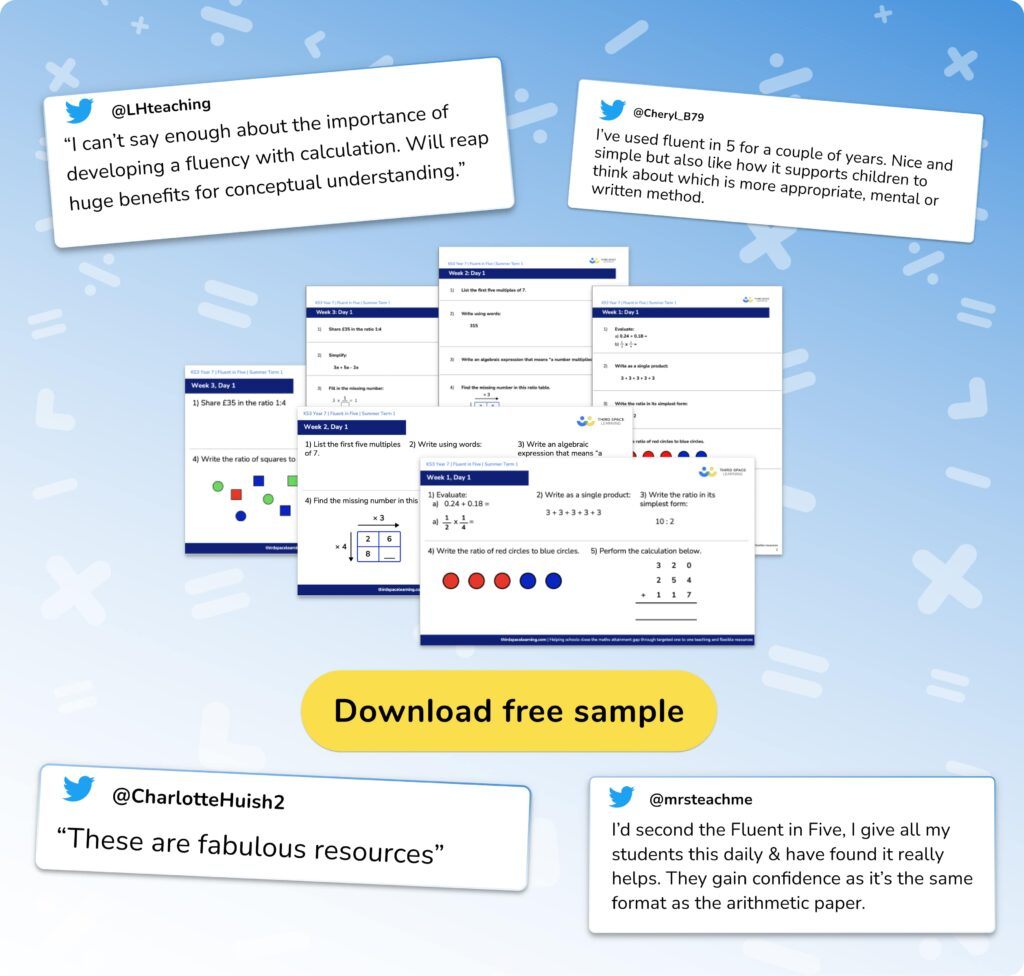
What are the implications for teaching in 2024?
Here are some the ways you can incorporate the learning from the 2023 series of papers into your teaching the 2024 academic year:
- Incorporate challenging or unusual problems from this series of exams into teaching materials for the next cohort of Year 11s. Using repeated or scaffolded variations of these problems can be particularly helpful;
- Look for ways to include less-standard topic crossovers more frequently in teaching content – the site Interwoven Maths is a fantastic resource for these types of questions;
- Use student feedback from the 2023t cohort – which questions did they find difficult on the exams? Do current learning materials need adapting to plug these gaps?
- Before Results Day, think about how you will use question-level analysis for your cohort – there may be specific gaps in teaching within your department that are not reflected nationwide, which may represent a need for departmental CPD or sharing of good practice on key topics.
DO YOU HAVE STUDENTS WHO NEED MORE SUPPORT IN MATHS?
Skye – our AI maths tutor built by teachers – gives students personalised one-to-one lessons that address learning gaps and build confidence.
Since 2013 we’ve taught over 2 million hours of maths lessons to more than 170,000 students to help them become fluent, able mathematicians.
Explore our AI maths tutoring or find out how our GCSE maths tutoring programmes could support students in your school.
